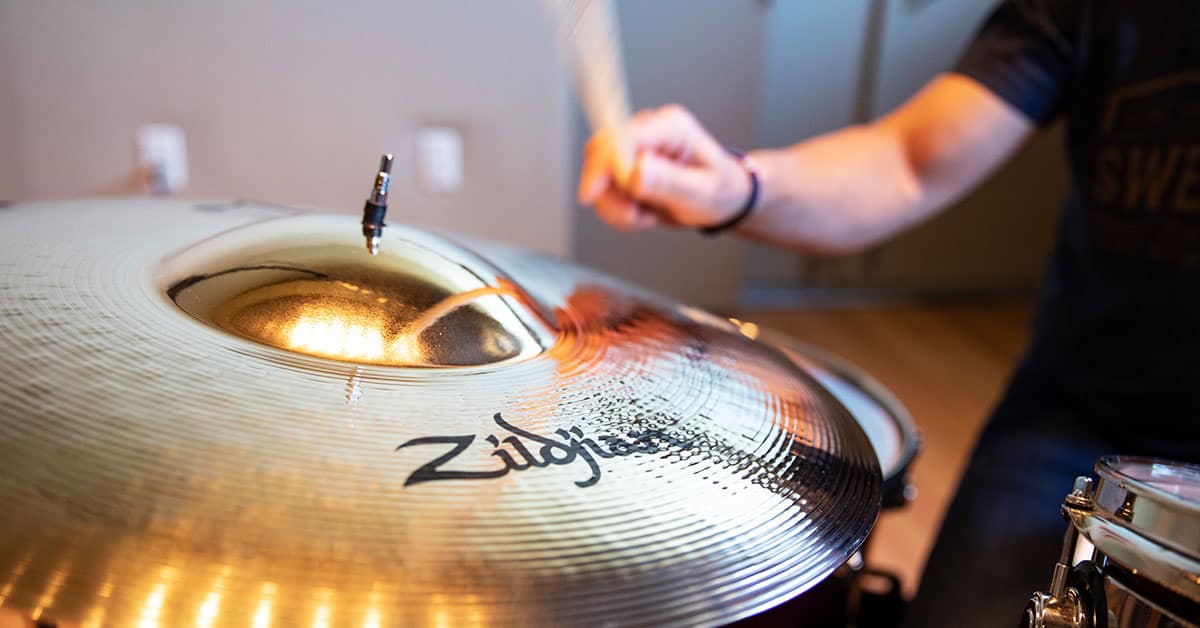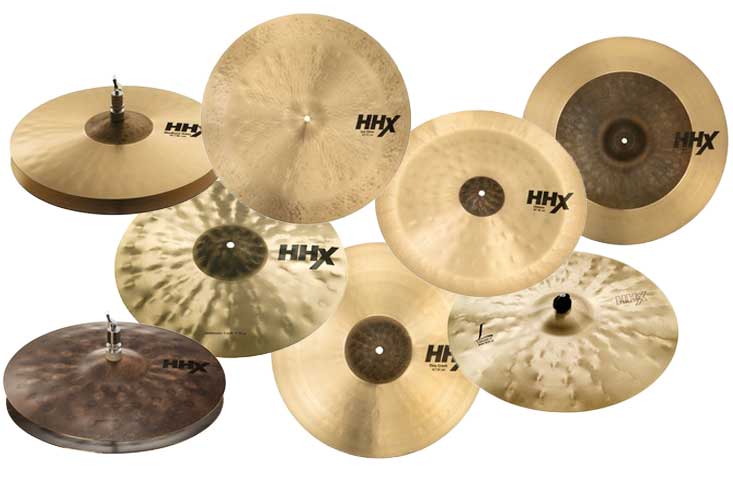Crash, Ride, or Hi-Hat? The Ultimate Guide to Choosing the Perfect Cymbals
Cymbals play a crucial role in drumming, adding depth, texture, and dynamics to your overall sound. They can greatly impact the tone and feel of your drumming, making it essential to choose the right cymbals for your style. Whether you’re a beginner or an experienced drummer, understanding the different types of cymbals and their unique characteristics is key to creating your desired sound.
The sound of your cymbals can greatly affect the overall sound of your drum kit. Different types of cymbals, such as crash, ride, and hi-hat, have distinct characteristics that contribute to the overall sound of your drumming.
For example, crash cymbals are used to add emphasis and dynamics to drumming, while ride cymbals provide a steady beat and groove. Hi-hat cymbals are essential for keeping time and adding texture to your drumming.
Choosing the right cymbals for your style is crucial in order to achieve the sound you desire. The size, thickness, and material of the cymbal all play a role in determining its sound. It’s important to consider your drumming style and the genre of music you play when choosing cymbals.
For example, if you play heavy metal, you may prefer larger and thicker cymbals for a louder and more aggressive sound. On the other hand, if you play jazz or acoustic music, you may opt for smaller and thinner cymbals for a more delicate and nuanced sound.
Understanding the Different Types of Cymbals: Crash, Ride, and Hi-Hat
Crash cymbals are typically used to add emphasis and dynamics to drumming. They produce a loud and explosive sound when struck with a drumstick or mallet. Crash cymbals are often used to accentuate certain beats or fills in a song, adding excitement and energy to the music.
Examples of popular songs that showcase the use of crash cymbals include “Smells Like Teen Spirit” by Nirvana and “Back in Black” by AC/DC.
Ride cymbals are the backbone of your groove, providing a steady beat and rhythm. They produce a sustained and shimmering sound when struck with a drumstick or mallet. Ride cymbals are often used to maintain a consistent tempo and create a smooth and flowing groove. Examples of popular songs that showcase the use of ride cymbals include “Hotel California” by The Eagles and “In the Air Tonight” by Phil Collins.
Hi-hat cymbals are essential for keeping time and adding texture to drumming. They consist of two cymbals that are mounted on a stand and played with a foot pedal. Hi-hat cymbals produce a crisp and sharp sound when closed together, and a sustained and shimmering sound when opened.
They are often used to create intricate rhythms and patterns, adding complexity and depth to the music. Examples of popular songs that showcase the use of hi-hat cymbals include “Superstition” by Stevie Wonder and “When the Levee Breaks” by Led Zeppelin.
The Anatomy of a Cymbal: What to Look for When Choosing
When choosing cymbals, it’s important to understand the different parts of a cymbal and their functions. The main parts of a cymbal include the bell, bow, edge, and taper. The bell is the raised area in the center of the cymbal, which produces a higher-pitched sound when struck.
The bow is the curved area between the bell and edge, which produces the main body of the sound. The edge is the outer rim of the cymbal, which produces a bright and cutting sound when struck. The taper is the gradual thinning of the cymbal from the bell to the edge, which affects the overall sound and response of the cymbal.
The shape and thickness of a cymbal also play a significant role in determining its sound. Cymbals with a larger bell and more pronounced taper tend to have a brighter and more focused sound. On the other hand, cymbals with a smaller bell and less pronounced taper tend to have a darker and more complex sound. The thickness of a cymbal affects its volume and sustain. Thicker cymbals produce a louder and more sustained sound, while thinner cymbals produce a softer and more controlled sound.
Before purchasing a cymbal, it’s important to inspect it for cracks or damage. Cracks can greatly affect the sound and durability of a cymbal. It’s recommended to tap the cymbal lightly with a drumstick or mallet to check for any dead spots or unusual vibrations. Additionally, it’s important to check the edges of the cymbal for any signs of wear or damage. If you notice any cracks or damage, it’s best to avoid purchasing the cymbal as it may not provide the desired sound or longevity.
Factors to Consider When Choosing Cymbals: Sound, Size, and Material
When choosing cymbals, there are several factors to consider, including sound, size, and material. The sound of a cymbal is greatly influenced by its size and material. Larger cymbals tend to produce a louder and more powerful sound, while smaller cymbals produce a softer and more delicate sound.
The material of a cymbal also affects its sound. Different materials, such as bronze or brass, produce different tonal characteristics. Bronze cymbals are known for their warm and rich sound, while brass cymbals are known for their bright and cutting sound.
It’s important to consider your drumming style when choosing cymbals. Different genres of music require different types of cymbals. For example, if you play rock or metal music, you may prefer larger and thicker cymbals for a louder and more aggressive sound.
On the other hand, if you play jazz or acoustic music, you may opt for smaller and thinner cymbals for a more delicate and nuanced sound. It’s also important to consider the specific needs of your playing style. If you play with a lot of power and intensity, you may prefer cymbals that can withstand heavy hitting and produce a loud sound.
If you play with finesse and subtlety, you may prefer cymbals that are more responsive and produce a softer sound.
There are many popular cymbal sizes and materials used in different genres of music. In rock and metal music, larger cymbals are often used for their loud and powerful sound.
Common sizes include 18-inch crash cymbals, 20-inch ride cymbals, and 14-inch hi-hat cymbals. In jazz and acoustic music, smaller cymbals are often used for their delicate and nuanced sound.
Common sizes include 16-inch crash cymbals, 18-inch ride cymbals, and 13-inch hi-hat cymbals. As for materials, bronze cymbals are commonly used in professional settings due to their warm and rich sound. Brass cymbals are often used by beginners or in budget-friendly setups due to their bright and cutting sound.
Crash Cymbals: The Perfect Accent for Your Drumming Style
Crash cymbals are an essential component of any drum kit, adding emphasis and dynamics to your drumming style. They are typically used to accentuate certain beats or fills in a song, adding excitement and energy to the music. Crash cymbals produce a loud and explosive sound when struck with a drumstick or mallet, making them perfect for creating dramatic moments in your drumming.
When choosing crash cymbals, it’s important to consider the size and thickness that best suits your style. Larger crash cymbals tend to produce a louder and more powerful sound, while smaller crash cymbals produce a softer and more controlled sound. Thicker crash cymbals produce a louder and more sustained sound, while thinner crash cymbals produce a softer and more immediate sound. It’s also important to consider the material of the crash cymbal. Bronze crash cymbals are known for their warm and rich sound, while brass crash cymbals are known for their bright and cutting sound.
Examples of popular songs that showcase the use of crash cymbals include “Smells Like Teen Spirit” by Nirvana, where the crashing sound of the cymbals adds intensity to the chorus, and “Back in Black” by AC/DC, where the crashing sound of the cymbals adds energy to the driving rhythm. By choosing the right size, thickness, and material of crash cymbals, you can add the perfect accent to your drumming style.
Ride Cymbals: The Backbone of Your Groove
Ride cymbals are an essential component of any drum kit, providing a steady beat and groove. They are typically used to maintain a consistent tempo and create a smooth and flowing rhythm. Ride cymbals produce a sustained and shimmering sound when struck with a drumstick or mallet, making them perfect for creating a solid foundation for your drumming.
When choosing ride cymbals, it’s important to consider the size and thickness that best suits your style. Larger ride cymbals tend to produce a louder and more powerful sound, while smaller ride cymbals produce a softer and more controlled sound. Thicker ride cymbals produce a louder and more sustained sound, while thinner ride cymbals produce a softer and more immediate sound. It’s also important to consider the material of the ride cymbal. Bronze ride cymbals are known for their warm and rich sound, while brass ride cymbals are known for their bright and cutting sound.
Examples of popular songs that showcase the use of ride cymbals include “Hotel California” by The Eagles, where the sustained sound of the ride cymbal adds a smooth and flowing groove to the song, and “In the Air Tonight” by Phil Collins, where the shimmering sound of the ride cymbal adds a haunting and atmospheric quality to the drumming. By choosing the right size, thickness, and material of ride cymbals, you can create the perfect backbone for your groove.
Hi-Hat Cymbals: The Essential Timekeeper
Hi-hat cymbals are an essential component of any drum kit, keeping time and adding texture to your drumming. They consist of two cymbals that are mounted on a stand and played with a foot pedal. Hi-hat cymbals produce a crisp and sharp sound when closed together, and a sustained and shimmering sound when opened. They are often used to create intricate rhythms and patterns, adding complexity and depth to the music.
When choosing hi-hat cymbals, it’s important to consider the size and thickness that best suits your style. Larger hi-hat cymbals tend to produce a louder and more powerful sound, while smaller hi-hat cymbals produce a softer and more controlled sound. Thicker hi-hat cymbals produce a louder and more sustained sound, while thinner hi-hat cymbals produce a softer and more immediate sound. It’s also important to consider the material of the hi-hat cymbal. Bronze hi-hat cymbals are known for their warm and rich sound, while brass hi-hat cymbals are known for their bright and cutting sound.
Examples of popular songs that showcase the use of hi-hat cymbals include “Superstition” by Stevie Wonder, where the crisp sound of the hi-hat cymbals adds a funky and rhythmic groove to the song, and “When the Levee Breaks” by Led Zeppelin, where the sustained sound of the hi-hat cymbals adds a driving and relentless rhythm to the drumming. By choosing the right size, thickness, and material of hi-hat cymbals, you can become an essential timekeeper in your drumming.
Cymbal Sets vs. Individual Cymbals: Which is Right for You?
When it comes to purchasing cymbals, you have the option of buying cymbal sets or individual cymbals. Both options have their pros and cons, and it’s important to consider your budget and style when making a decision.
Cymbal sets are a convenient option for beginners or drummers who want a complete set of cymbals that are designed to work well together. Cymbal sets typically include crash, ride, and hi-hat cymbals that are specifically selected to complement each other in terms of size, thickness, and material.
This ensures that all the cymbals in the set have a cohesive sound and work well together in various musical settings. However, cymbal sets may limit your options if you prefer a specific brand or want to mix and match different types of cymbals.
On the other hand, purchasing individual cymbals allows you to have more flexibility and control over your sound. You can choose cymbals from different brands or series that best suit your style and preferences.
This allows you to create a unique and personalized sound that is tailored to your specific needs. However, purchasing individual cymbals can be more expensive in the long run, as you will need to buy each cymbal separately.
When deciding between cymbal sets and individual cymbals, it’s important to consider your budget and style. If you’re a beginner or on a tight budget, a cymbal set may be a more cost-effective option. However, if you have a specific sound in mind or want more control over your sound, purchasing individual cymbals may be the better choice.
Top Brands for Quality Cymbals: A Comparison
There are many top brands that produce high-quality cymbals, each with their own unique characteristics and sound. It’s important to consider your style and budget when choosing a brand of cymbals.
Zildjian is one of the most well-known and respected brands in the world of cymbals. They have been producing cymbals since 1623 and are known for their rich and versatile sound. Zildjian offers a wide range of cymbals in various sizes and materials, allowing drummers to find the perfect sound for their style. Popular drummers who use Zildjian cymbals include Travis Barker of Blink-182 and Dave Grohl of Foo Fighters.
Sabian is another popular brand that produces high-quality cymbals. They were founded in 1981 by former Zildjian employees and have since become known for their bright and cutting sound.
Sabian offers a wide range of cymbals in various sizes and styles to cater to the needs of different drummers. Their cymbals are crafted using a combination of traditional hand-hammering techniques and modern manufacturing processes, resulting in a balanced and consistent tone.
Sabian cymbals are favored by many professional drummers for their durability and versatility, making them suitable for a wide range of musical genres. Whether you’re a beginner or an experienced drummer, Sabian has a cymbal that will enhance your playing and bring your music to life.
Originally posted 2024-02-29 03:23:20.



